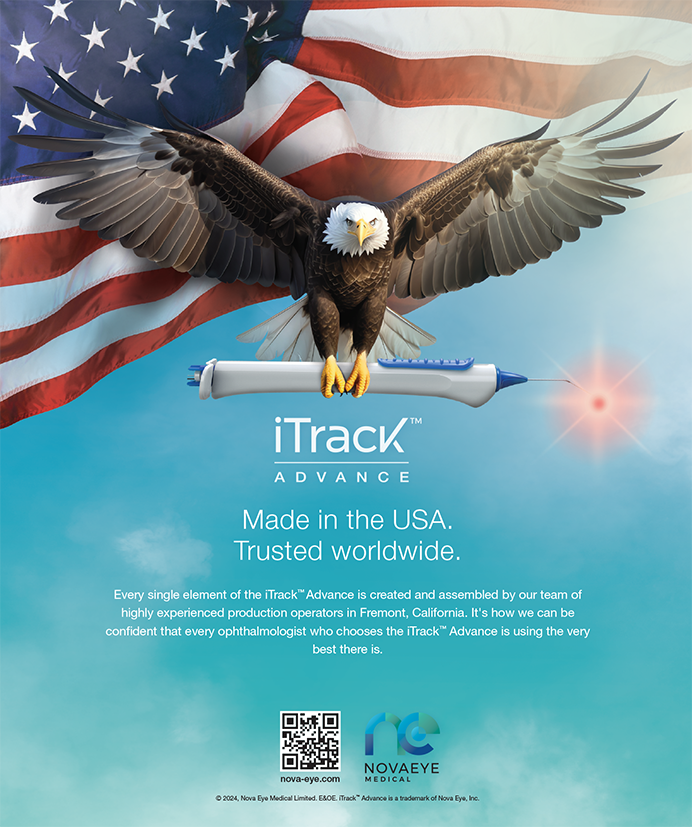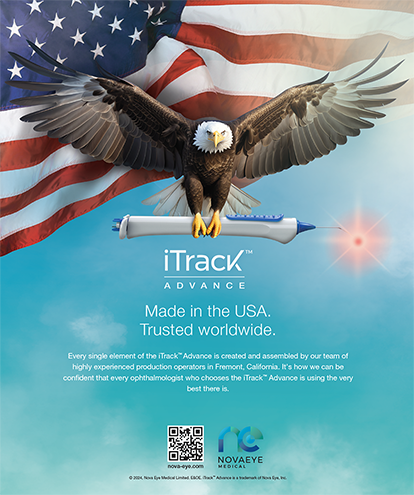Tell us what you have been doing lately. As Medical Director of the TLCVision Windsor center, I continue to benefit from Canada's less-restrictive approach to new technology. Since January 1999, I have been involved with the initial ICL international trials. I have been using the Bausch & Lomb Zyoptix system for custom LASIK since May 2001. I am also quite excited about refractive lensectomy followed by cross-cylinder ablation LASIK for the treatment of high hyperopia with astigmatism. On top of that, I am working on a new LASIK textbook.
What has been your experience with the implantable contact lens? I have been performing ICL implantations for nearly 4 years now. Initially, the procedure would take me up to 40 minutes, but after 250 implantations, I am now down to around 5 minutes per eye. I have been implanting only those patients who are not candidates for LASIK, with myopia greater than 10.0 D and hyperopia greater than 4.0 D. The main complication is an anterior subcapsular cataract (ASC) that occurs in the first month. It is not progressive, and the incidence after implantation has decreased from 8% in 1999 and 4% in 2000 to 0.5% in 2001. Most of the ASCs have been subclinical and have not affected the BCVA. I just treated my first clinically significant ASC with ICL removal, followed by cataract extraction and IOL implantation. It was a very straightforward procedure. I have found that about 50% of these patients return for LASIK after ICL implantation to have their residual sphere and cylinder corrected, so I have come to consider this a two-step procedure. Patient satisfaction with ICLs has been very high.
What are some of your major career goals? After 40,000 LASIK procedures and four refractive surgery books, I have achieved many of my initial goals, but I have recently re-evaluated and revised my career goals. Ethically, I hope to perform only those procedures that I would honestly recommend to a family member. Professionally, I hope to make contributions to ophthalmology and refractive surgery that improve our field. Personally, I hope to balance my marriage and family life with my career, and never allow the stress to become destructive. My hope is that these goals allow me to enjoy practicing ophthalmology for the next 20 years.
How do you juggle your time between three cities? As with any busy schedule, the key to managing and traveling between all the centers is effective time management and organization. I have a phenomenal staff at each center, who keeps everyone happy when I am not there. The comanagement model provides excellent care and support for my patients. My wife's support has been essential. While my life can be very busy at times, I have adapted to the schedule quite well.
What has been the biggest surprise of your career? My biggest surprise has been the rapid rise of refractive surgery and LASIK over the last 3 years to near-universal acceptance in the ophthalmic community. When I first started working with Jeffrey Machat in 1995, I was the third surgeon to work at TLCVision Windsor center. LASIK was quite controversial at that time, even in Canada. Controversies regarding PRK versus LASIK, bilateral versus simultaneous LASIK, and comanagement made the refractive surgery environment very risky and exciting.


